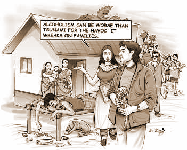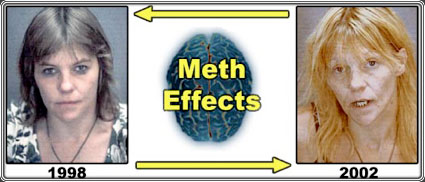 |



ABOUT TIR, HISTORY & MISSION STATEMENT NEWS MEDIA RESEARCH LIBRARY PUBLISHING CORNER CALIF INDIAN COMMUNITY TIR WEB SITE |
NATIVE AMERICAN INDIAN KILLERS
Alcohol is the Single Most Dangerous Drug on the Plant and is legally sold in almost every town, city and state in the country and even on some reservations in the country. Alcohol abuse in the Native American community is epidemic and the leading cause of death of the tribal youth than any other drug.
THE QUIET EPIDEMIC: Our seniors are developing drug and alcohol addiction at alarming rates. REHABNET.COM provides elders with resources and treatments for care providers and seniors battling addiction and related conditions.... Methamphetamine is the second leading drug of choice among the drug users, which is combined with the legal drug of alcohol in the nation today. Substances abuse is not confined to the Southern California Indian Reservation population nor is it a gender, racial or age issue it is an epidemic of massive magnitude in the nation. HELLO, MY NAME IS METH, I destroy homes, I tear families apart, take your children, and that's just the start.... It must be keep in mind when developing a long-term substance abuse strategy to understand the nature of the combination of drugs that are being abused by the users, the effect on the users and the long-term commitment of resources that is required to implement a successful program to curb substance abuse within the Native American target population. According to Methamphetamine Data collected through Indian Health Services RPMS Patient Care Component (PCC) and Behavioral Health (BHS) reporting system Methamphetamine encounters have been increasing steadily since 1997. The number of methamphetamine related encounters documented in 2004 were 6,875. 9,577 were reported for the year 2005. It is frightening to realize this is a 39.3% annual increase from the year 2004 to 2005. The numbers being collected in 2006 appear to demonstrate this upward trend is continuing. The same report also included other information that should cause great concern. Of special interest is a list of the states documenting the greatest methamphetamine use of which California and specifically Southern California is among the highest number of methamphetamine related encounters reported. Given these statistics and the proximity of the 100 plus Indian Reservations and Rancherias in California to major cities it would be a fair conclusion that access to methamphetamine for the Native American Tribal population is a given. Unduplicated patient count by age and sex related to methamphetamine use shows an increase of methamphetamine abuse between the ages of 10 to 65 years old. Of this group, women between the ages of 15 to 54 years of age represent the largest segment reporting incidences of methamphetamine use. What is Meth? Methamphetamine (known on the street as “speed,” “meth,” “crank,” “crystal-meth,” and “glass”) is a central nervous system stimulant of the amphetamine family. Like cocaine, it is a powerful “upper” that produces alertness, and elation, along with a variety of adverse reactions. The effects of methamphetamine, however, are much longer lasting then the effects of cocaine, yet the cost is much the same. For that reason, methamphetamine is sometimes called the “poor man's cocaine.” As with many drugs, methamphetamine, if prescribed by a physician, is legally available in the United States for the treatment of attention deficit disorders (ADD) and obesity. Unfortunately, much of the methamphetamine available on the street is illicit methamphetamine from clandestine laboratories in the United States. Production originally concentrated in clandestine labs throughout the Western and Southwestern United States, but has spread to the Central United States and beyond. In addition to the clandestine laboratories in the United States, organized crime groups in Mexico appear responsible for increased methamphetamine production on both sides of the border during the 1990s.”What is Meth?” above reprinted from the Web site: lifeormeth.com. Ed. Risk Profile of Population: Alcohol and substance abuse continue to be an issue of significant concern within the tribal population. Historically, teen pregnancy in San Diego County teen birth rates has exceeded state and national averages. For example, the California teen birth rate (per 1000) for 1997-1999 was 53.3, whereas for San Diego County, the average was significantly higher at 61.2. This trend does not appear to be changing. Approximately 3,245 mothers under the age of 20 gave birth in 2000 (rate of 62.8). Equally distressing, according to a 2000 Kaiser Daily Reproductive Health Report, Native American teen birth rates in California are one the rise; in fact, Native American teens have the dubious distinction of being the only racial or ethnic group in the state to see an increase in teen pregnancies. In 1998, the Native American teen birth rate increased by 6.4% from 1997, whereas in that same period, births fell by 5.3% for whites, 6.4% for Hispanics, and 8.7% for blacks. In 2000, approximately 38 Native American teens gave birth in San Diego County. Mortality Rates: In 1997, related to alcoholism were high among Native American populations. In 1996 Chronic liver disease and cirrhosis of the liver was the 5th leading cause of death for Native American men and the 6th leading cause of death for Native American women in 1993. (National Minority AIDS Council 1999). Among Native Americans, the highest rates of gonorrhea for males were for those ages 20-24 (224.6 per 100,000) and among females for those ages 15-19 (554 per 100,000) According to the CDC, in 1997, more than half (53%) of all Native Americans with AIDS resided in five states at the time of their AIDS diagnosis: California (25%), Oklahoma (11%), Washington (7%), Arizona (6%), and Alaska (4%). Additionally, the five metropolitan statistical areas with the highest percentages of Native Americans with AIDS were San Francisco, CA (6%), Los Angeles-Long Beach, CA (6%), Seattle-Bellevue-Everett, WA (4%), Tulsa, OK (4%), and San Diego, CA (3%) (National Minority AIDS Council, 1999). Self-Destructive and Illegal Behaviors: A 2001 study by US Department of Health and Human Services report that Native American youth are repeatedly exposed to opportunities to participate in self-destructive and illegal behaviors. Resent data point to a pattern of reckless living among Native American youth in Indian Country. Motor vehicle and other accidents are the leading cause of death among Native American youth ages 15-24, whose rate of death due to accidents is almost three times higher than the rate for the total U.S. population (USDHHS, 1999). Data also indicate the presence of despair. Suicide is the second leading cause of death for Native American youth in the 15-24 age group. The Average Life Expectancy of Native Americans is 65 years; for all other Americans it is 76 years. The average annual income of the Native American is 61% of the national average. An estimated fifty thousand Native American families living in the Southwest live in sub-standard housing, often without running water, electricity or adequate facilities. Native American infant mortality is almost double that of the national average. The suicide rate of Native American adults is 1.7 times greater than the national average. Suicide among school age Native Americans is 3 to 5 times the national average. Native American females ages 15-34 were reported of dying of cirrhosis of the liver at a rate 37 times greater than white females of the same age group. Native Americans are one of the most isolated minority groups in America. Our history is one of abuse by the majority population leading to the loss of culture, land, language, and self-determination. Most of the target tribes are located on government-designated reservations in rural areas far removed from the general population and the land they once inhabited. The destruction of the Native American family structure has meant less parental and tribal influence, increased sexual behavior among youth, more pregnant teens, and growth in the number of families without fathers. For instance, recent census figures reveal that single female-households. As a Result of the Information Above, the primary focus should be on educating the tribal youth and community on the dangers related to the use of alcohol and methamphetamine. The secondary focus should be to assisting the tribal population with alcohol and methamphetamine abuse by providing rehabilitation and support. Taking on Alcohol Substance Abuse within the Indian Tribal communities will require a well organized collaborative effort between the Tribal Governments, reservation tribal communities at large, local, county and state health provides, law enforcement and rehabilitation service providers. A long-term commitment to providing the resource in the manifestation of facilities, funding and professional expertise are other key components for developing and sustaining a “Long-Term Comprehensive Plan” to combat substance abuse by tribal members. The development of goal, objective, activities and timelines for a “Long-Term Comprehensive Plan” to meet the challenge of eradicating substance abuse on the target Southern California Indian Reservations are invalid without the resources and the commitment of a meaningful collaborative effort between the Tribal Governments, reservation tribal communities at large, local, county and state health provides, law enforcement and rehabilitation service providers. Tribal Priorities will need to change making the prevention of alcohol and substance abuse a top priority. The challenge must be a collaborative effort between all the tribes because they are not isolated from each other. The tribes will also need to make a long-term commitment to providing the financial resources to insure that the desired results are realized, saving our youth.
|
CALIF INDIAN NETWORK: AHMIUM.org | SCAIR.org | SDICENTER.org | APAPAS.com | CALIE.org | THEINDIANREPORTER.COM
—
WEB SITE DESIGN
www.theindianreporter.com COPYRIGHT 2009-Present • ALL RIGHTS RESERVED




